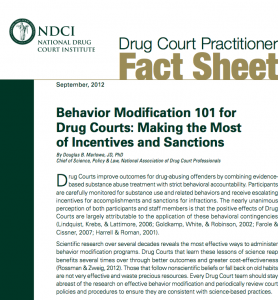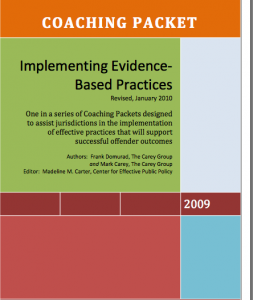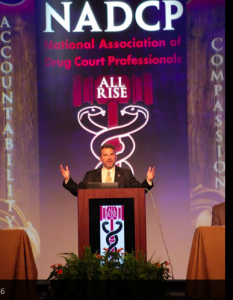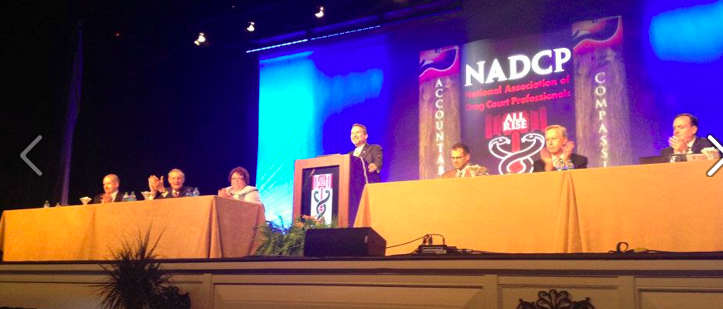Dec. 17, 2012
 Drug Court Research can provide a great deal of critical information to those engaged in the development of Reentry Courts and other Evidence-based Sentencing Systems. Dr. Doug Marlowe, Chief of Science, Policy & Law, National Association of Drug Court Professionals, continues to produce invaluable practitioner information to the Collaborative Court field.
Drug Court Research can provide a great deal of critical information to those engaged in the development of Reentry Courts and other Evidence-based Sentencing Systems. Dr. Doug Marlowe, Chief of Science, Policy & Law, National Association of Drug Court Professionals, continues to produce invaluable practitioner information to the Collaborative Court field.
Dr. Marlowe makes this important observation in his “Drug Court Practioner Fact Sheet, Behavior Modification 101 for drug Courts: Making the Most of Incentives and Sanctions” (click on image on the left for PDF).
“At its core, the criminal justice system is a behavior modification program designed to reduce crime and rehabilitate offenders. Historically, unfortunately, rewards and sanctions were rarely applied in a systematic manner that could produce meaningful or lasting effects. Dissatisfied with this unacceptable state of affairs, a group of criminal court judges set aside special dockets to provide closer supervision and greater accountability for substance-dependent and substance-abusing offenders. Wittingly or unwittingly, these judges devised programs that are highly consonant with the scientific principles of contingency management or operant conditioning.
Research now confirms that the effectiveness and cost-effectiveness of any Drug Court will depend largely on its ability to apply these behavioral techniques correctly and efficiently. Drug Courts that ignore the lessons of science are not very effective and waste precious resources and opportunities. Drug Court teams should periodically consult the latest findings on behavior modification and attend training and technical assistance activities to ensure they are making the most of their limited resources and leveraging the best outcomes for their participants and their communities.” (p.8)
Reentry Courts and Evidence-Based Sentencing Systems would do well to familiarize themselves with this NDCI publication (It should be noted that appropriate Drug Court methodology can sometimes differ substantially when applied to different populations; more on that later). Systemic Approaches are clearly key to the effective sentencing and rehabilitation of all offenders, not just those who are drug dependent. The application of “Evidence Based Sentencing Systems, then is especially important when jurisdictions sentence serious offenders. (See: An Overview of a Court-Based Sentencing System and Court-Based Realignment Recommendations; immediately below))




